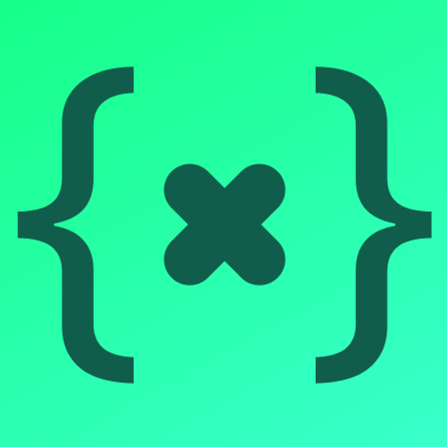Claude
Webflow's Model Context Protocol (MCP) server connects Claude AI directly to your site's CMS, Designer APIs, and data layer.

How to integrate Anthropic Claude with Webflow
You can connect Anthropic Claude to your Webflow site's CMS for automated content generation, form processing with AI analysis, and programmatic site management. Webflow's Model Context Protocol (MCP) server provides direct API access to build workflows that standard automation platforms can't handle, like checkout experiences with personalized recommendations or gated content with AI-powered access logic.
Integration methods include Webflow's MCP server for Claude Desktop, automation platforms like Zapier and Make, or custom implementations using Webflow's REST API and Claude's Messages API. The Claude Messages API documentation provides endpoint specifications, authentication patterns, and rate limit details.
Use Webflow's Model Context Protocol server
The Webflow MCP server implements Anthropic's Model Context Protocol specification to connect Claude AI directly to Webflow's Designer and Data APIs. This enables programmatic site management, CMS operations, and custom code deployment through natural language prompts in Claude Desktop.
Install the server through npm with Node.js 22.3.0 or higher, authenticate via OAuth, and configure Claude Desktop to access your Webflow sites. The MCP installation guide walks through environment variable setup, token configuration, and Claude Desktop integration steps.
The MCP server provides these capabilities:
- Update site designs through the Designer API to modify layouts, styles, and components programmatically
- Manage CMS collections with the Collection Items API for bulk content operations and automated publishing
- Create pages and elements via API calls that generate semantic HTML with proper accessibility attributes
- Inject custom code into page head or body sections for analytics, third-party integrations, or custom functionality
- Access site metadata including collection schemas, page structures, and published asset URLs
The Webflow Designer companion app must remain open for Designer API operations to function. The MCP server maintains a live connection between Claude and your canvas, syncing changes in real-time. OAuth authentication requires proper scope configuration for CMS write access and Designer modifications.
Use automation platforms
Zapier, Make, and n8n provide pre-built connectors between Webflow and Claude AI without custom code. These platforms work best for form-triggered workflows, scheduled content generation, and data synchronization tasks that don't require real-time processing.
Zapier's Webflow integration triggers workflows from form submissions, new CMS items, or order creation events. Connect these triggers to Claude's content generation actions, then route responses back to Webflow's CMS or external systems. The Webflow Zapier setup guide covers authentication requirements and field mapping constraints.
Common automation workflows include:
- Process form submissions through Claude for lead qualification, then update CRM records or send notification emails
- Generate blog content on a schedule, analyze through Claude for SEO optimization, then publish to Webflow CMS collections
- Analyze order data from Webflow e-commerce, generate personalized product recommendations, and sync to marketing platforms
- Extract CMS content for quality audits, process through Claude for improvements, then update items programmatically
Make.com's visual workflow builder provides more complex branching logic and error handling than Zapier's linear trigger-action model. N8N's self-hosted option gives you full control over data processing and API key security.
CMS reference fields and multi-reference fields require workarounds through automation platforms. Direct mapping is not supported, but you can use Webflow item IDs stored in lookup fields or implement PATCH requests after initial item creation. For multi-reference fields, use custom code steps with JSON formatting. These workarounds require additional configuration steps beyond standard field mapping.
Build with Webflow and Claude APIs
Direct API integration combines Webflow's REST API with Claude's Messages API for custom workflows that automation platforms don't support. This approach requires server-side code but enables real-time content generation, webhook-triggered processing, and complex multi-step workflows.
Authenticate to both APIs, implement rate limit handling, and build error recovery logic for production deployments. The Webflow authentication guide covers OAuth flows and API token management.
Generate content for Webflow CMS
The Claude Messages API generates text content through POST requests to /v1/messages. Send prompts with context about your target audience and content requirements, receive structured responses, then format for Webflow's CMS Item API.
curl -X POST https://api.anthropic.com/v1/messages \
-H "x-api-key: YOUR_API_KEY" \
-H "anthropic-version: 2023-06-01" \
-H "content-type: application/json" \
-d '{
"model": "claude-sonnet-4-20250514",
"max_tokens": 1000,
"messages": [{
"role": "user",
"content": "Generate SEO-optimized blog content about sustainable architecture for a real estate audience. Include technical specifications and environmental benefits."
}]
}'
Parse Claude's response, extract relevant fields, then POST to Webflow's /collections/{collection_id}/items endpoint.
Store API keys in environment variables following Anthropic's security best practices. Never expose credentials in client-side code or version control. Implement server-side proxy endpoints that handle authentication for both services.
Process form submissions with AI analysis
Configure Webflow webhooks to trigger on form submissions, route the data to your server, then analyze through Claude's API. Use this pattern for lead qualification, content categorization, or automated response generation.
The webhook payload includes form field data and site context. Extract relevant fields, construct a Claude prompt with the submission data, then process the AI response based on your workflow requirements. You might update the submitter's CMS record, send emails through external services, or trigger multi-step approval workflows.
Build custom content workflows
Combine multiple API endpoints for complex workflows. Fetch existing content from Webflow's CMS, analyze through Claude for improvements, update items programmatically, then publish changes through the Sites API.
This pattern works for scheduled content audits, automated SEO optimization, or content localization workflows. The Webflow Data API provides read access to collections, items, and site structure.
Claude AI does not support direct browser access in production environments. The API security documentation explains why client-side API calls create security risks. Always proxy requests through your backend to protect API keys and control access patterns.
What you can build
Integrating Claude with Webflow enables automated content workflows, AI-powered form processing systems, and dynamic site management tools that adapt to user behavior and business requirements.
- AI-powered content generation system: Build a blog publishing workflow that generates SEO-optimized articles based on keyword research, automatically populates Webflow CMS collections with formatted content, and schedules publishing through the Sites API
- Lead qualification portal: Create a form submission system that analyzes prospect responses through Claude, scores leads based on custom criteria, routes qualified prospects to sales teams, and updates CRM records through API integrations
- Dynamic product description generator: Develop an e-commerce content system that generates unique product descriptions from specification data, optimizes copy for search engines, and syncs content across multiple Webflow collections
- Automated accessibility audit tool: Build a site analysis system that extracts page content through Webflow's API, evaluates accessibility compliance through Claude's analysis capabilities, generates improvement recommendations, and tracks remediation progress in CMS collections
Frequently asked questions
The Webflow MCP server uses OAuth authentication with API tokens stored in environment variables. Generate tokens through your Webflow account settings with appropriate scopes for CMS write access and Designer API operations.
The authentication system requires the WEBFLOW_TOKEN environment variable configured in your Claude Desktop settings before the MCP server can establish connections to your sites. Token scope determines which API operations the server can perform, so configure permissions based on your specific integration requirements.
Yes, through the Webflow MCP server implementation which provides Claude agents access to both Designer and Data APIs. The Designer API enables programmatic modifications to page layouts, component styles, and element structures.
Claude can create new elements, update existing styles, and modify page hierarchies through natural language commands processed by the MCP server. The Webflow Designer companion app must remain open during these operations because the MCP server maintains a live connection between Claude and your canvas for real-time synchronization.
No, Webflow's Zapier integration guide explicitly states that CMS reference fields and multi-reference fields cannot be mapped through automation platforms. These field types require direct API integration through the Collections API with proper reference ID formatting. Video links added through automation won't render immediately in the Webflow interface. Build custom API integrations for workflows that depend on reference field relationships or complex CMS structures.

Description
Claude is a family of large language models developed by Anthropic that can generate text, analyze content, and process complex tasks through conversational AI.
This integration page is provided for informational and convenience purposes only.
ChatGPT
Direct API integration provides complete control over AI functionality compared to pre-built solutions, enabling custom conversation flows, context management, and advanced processing patterns that aren't possible through standard embeds.

Zapier
Share data between Webflow and third-party apps using Zapier.

Microsoft Copilot
Microsoft Copilot connects to Webflow through embedded chat interfaces or API calls. No official Webflow marketplace app exists, so you'll use code embeds or build custom API integrations.

monday.com
Connecting monday.com with Webflow requires either automation platforms or custom API implementation. Automation tools like Zapier and Make provide template-based workflows that handle common scenarios like form-to-task conversion.
Trello
Connect Trello's project management boards with Webflow to track design tasks, manage client feedback, and coordinate website development. This integration helps agencies and freelancers keep project workflows organized without manual updates between platforms.

PostgreSQL
Connect PostgreSQL with Webflow to sync database records to CMS collections and build data-driven websites.

xAttribute
Connect xAttribute with Webflow to manage custom HTML attributes through visual controls and templates.

Wrk
Connect Wrk with Webflow to automate workflows triggered by website events, form submissions, and CMS updates.

PostgreSQL
Connect PostgreSQL with Webflow to sync database records to CMS collections and build data-driven websites.


